Outstanding audio performance; broad format compatibility, including MQA; excellent build quality; and a $99 price tag make this headphone accessory a no-brainer.

Theo Nicolakis / IDG
Today’s Best Tech Deals
Picked by TechHive’s Editors
Top Deals On Great Products
Picked by Techconnect’s Editors
The ancient Greek amphitheater at Epidaurus is universally considered the acoustic marvel of the ancient world. I would argue that the noble (though oftentimes Sisyphean) quest for acoustic perfection is a fundamental part of the human spirit. Sadly, even with all the advancements of modern technology, audio quality on our most commonly used devices—our smartphones and tablets—somehow takes a back seat.
Processing chips inside these devices that convert the digital signal to analog for headphones are either sub-par or downright terrible. Moreover, they typically aren’t capable of delivering the power high-performance headphones need.
Adding an outboard DAC or headphone amplifier to get that performance traditionally meant sacrificing portability. Thanks to Helm Audio, that tradeoff is a thing of the past. Helm Audio’s Bolt DAC/AMP is a superb-sounding, ultra-portable DAC and amplifier that decodes the full range of today’s premier high-res audio formats for a mere $99. Read on why I fell in love with Helm Audio’s Bolt and named it an TechHive Editors’ Choice.
Superb fit and finish
When unboxing the Helm Bolt, the first thing you’ll notice is that the package is Spartan. It includes the Bolt DAC/AMP, a USB-C female to USB-A adapter, and a branded, self-closing carrying pouch. That’s it.
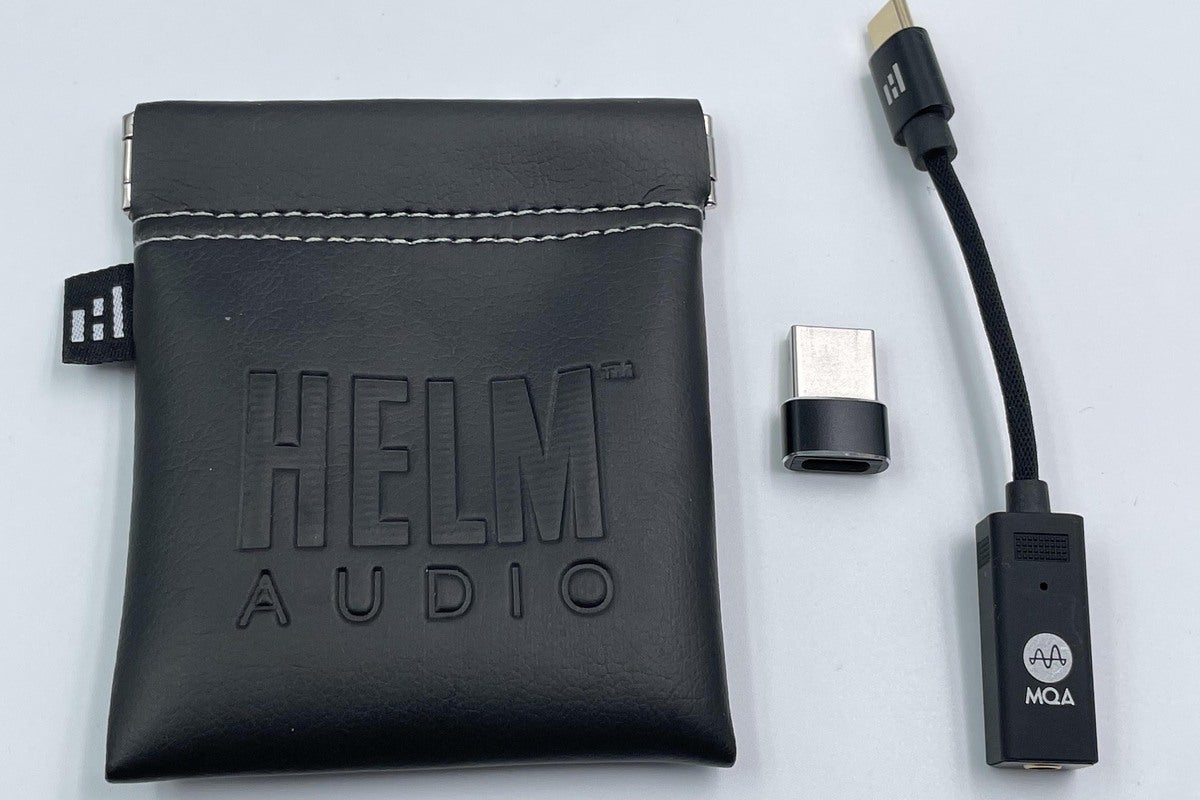 Theo Nicolakis / IDG
Theo Nicolakis / IDGWhat’s included in the box.
Holding the Helm Bolt in my hands, it felt like a high-quality product with premium materials. The rectangular headphone input was sealed with a matte black finish and checkered quadrant that let me get a solid grip on the Bolt for plugging and unplugging headphone jacks. Even with moist or sweaty hands, I had a confident grip. It’s a nice attention to detail you’ll appreciate with extended use. I cannot comment if this outstanding finish will wear over time.
High performance in an ultra-compact form factor
The heart of the Helm Bolt is the ESS Sabre 9281A Pro, a 32-bit, two-channel DAC and headphone amplifier in one. One of the key selling points is that the ESS Sabre DAC sports a hardware MQA renderer for MQA playback. This is in addition to DSD, WAV, and every major lossless codec. The Helm Bolt will support PCM sample rates up to 384kHz. The Helm Bolt’s signal-to-noise ratio is 115dB.
I’ve tested several outboard DAC/AMP solutions over the years. While they’ve smitten me with their performance, bulk has been their biggest detractor. Helm Bolt’s ultra-portable, flexible form factor is a major differentiator.
The Bolt DAC/AMP’s takes a cue from Apple’ Lightning-to-headphone adapter: On one end of the Bolt DAC/AMP you’ll find a USB-C connector and on the other a 3.5mm input that also houses the Bolt’s high tech electronics. A braided nylon cable connects the two components. The end result is a mere 3.75-inches long.
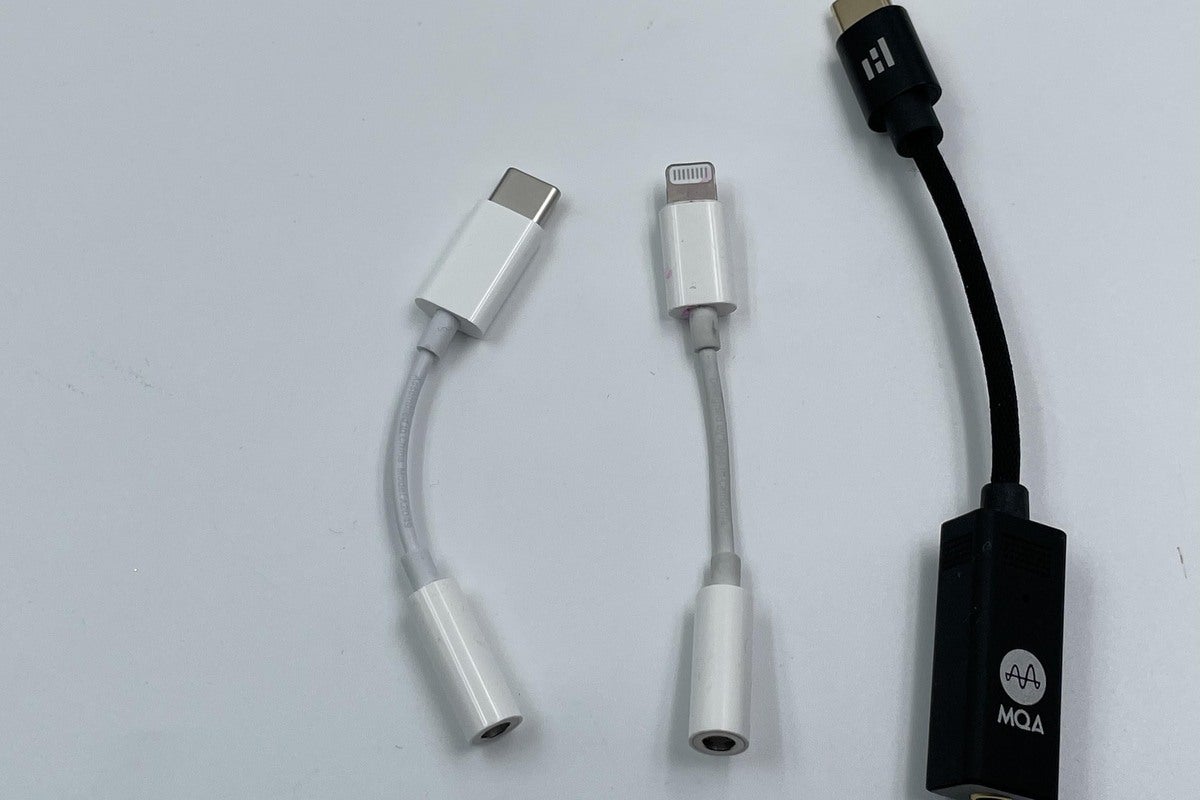 Theo Nicolakis / IDG
Theo Nicolakis / IDGHelm Bolt adapter size compared to Apple’s Lightning to headphone adapter and USB-C to headphone adapter.
I found the Bolt’s small, ultra-flexible form factor to be the most practical and functional of any outboard DAC I’ve used with a mobile device (or a computer for that matter). It was easy to slip into any pocket, jacket, or backpack. At about 1.2 ounces, it didn’t weigh me down. The flexible design never gave me major hesitations of tucking it away. And the fact that the Bolt didn’t require recharging or got super-hot sealed the deal.
The Bolt DAC/AMP doesn’t need a driver. It features a USB-C input that is compatible with MacOS, iOS, Windows 10, and Android. For iOS devices (like my iPhone 12 Pro) and computers without a USB-C port, Helm Audio includes a USB-C-to-USB-A converter in the box. Connect the converter and voila! You can use the Bolt DAC/AMP across a vast array of devices.
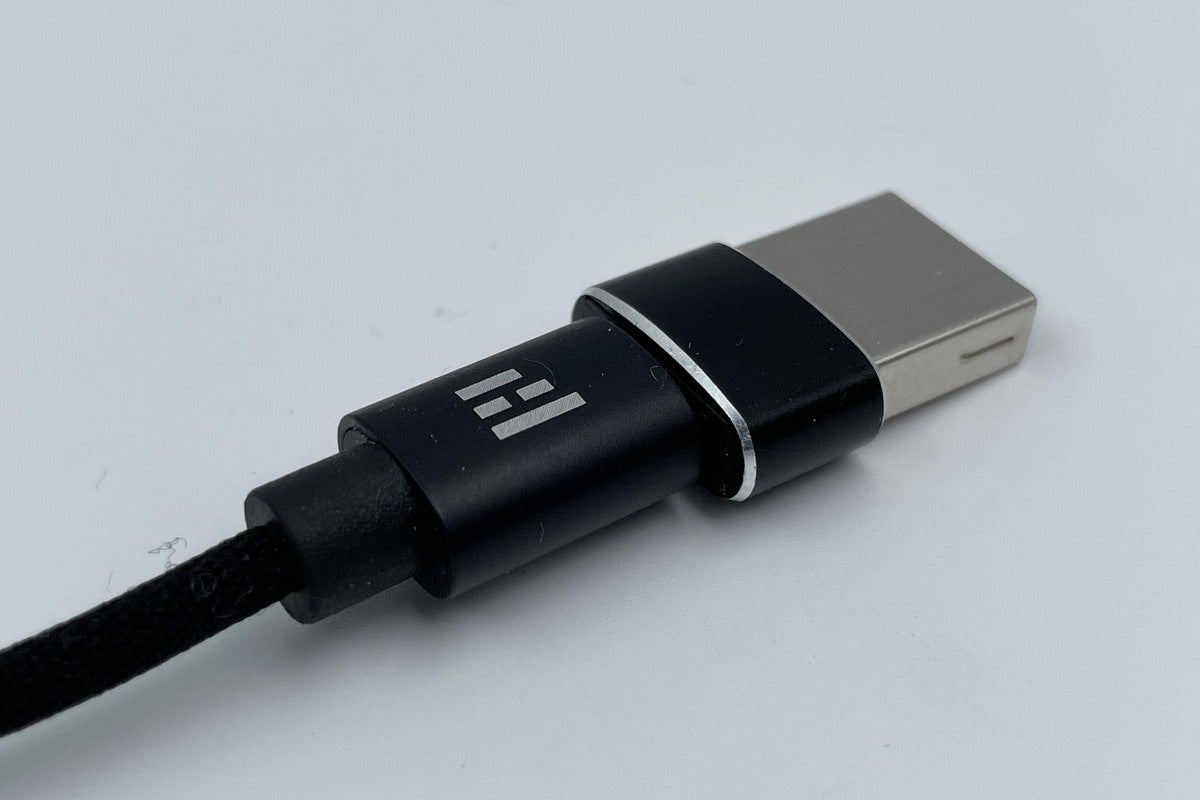 Theo Nicolakis / IDG
Theo Nicolakis / IDGTo connect with legacy devices, the Helm Bolt comes with a USB-C female to USB-A male adapter.
While Apple’s latest iPads feature a USB-C connector, you may be wondering how you bridge the gap with iPhones or Lightning connector-based iPads. The answer is simple, just pick up either the Apple Lightning-to-USB Camera Adapter or the Apple Lightning-to-USB-3 Camera Adapter. I purchased both adapters for this review. Both feature a Lightning-to USB-A connection and performed identically.
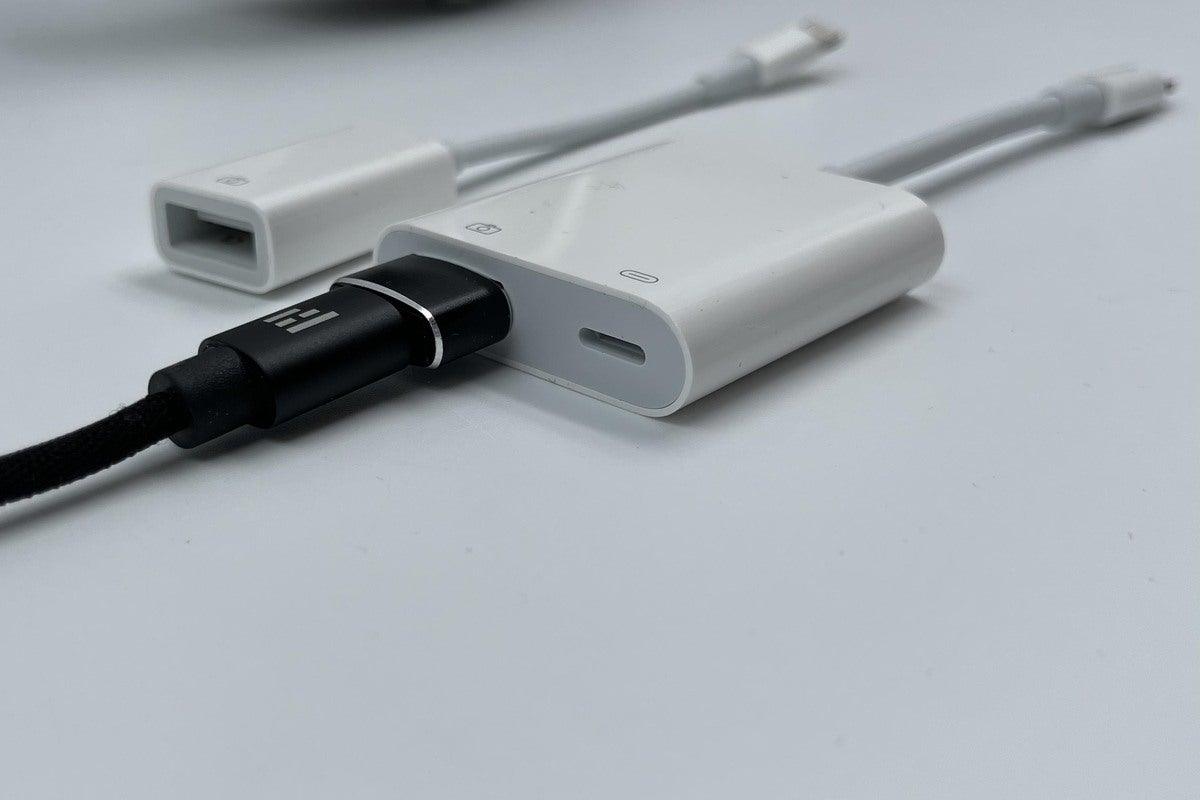 Theo Nicolakis / IDG
Theo Nicolakis / IDGDetail view of how to connect to one of Apple’s Ligntning-to-USB adapters.
Some minor hiccups
I will note two minor hiccups I experienced during my review period: I used the Helm Bolt via its USB-C connector on a Mac, a Windows 10 PC, and a USB-C based iPad. Everything worked wonderfully well with the exception of an odd anomaly on the Mac that I narrowed down to the Qobuz desktop app when used in conjunction with the Helm Bolt.
When first plugging in the Helm Bolt, the Mac sets the Bolt’s Master volume in the Audio MIDI app (located in the Utilities folder on the Mac) to 1.0 (100 percent). Tidal gave me an alert that the volume was too loud and automatically adjusted it. Apple Music Apps handled it gracefully within the app’s volume control. Not Qobuz.
The volume was so loud it nearly blasted out my ears and anything over 5 percent volume within the Quobuz app was ridiculously too loud. The only way I found to fix the problem was to go into the Audio MIDI app and reduce the master volume to 50 percent or less. I’ve experienced some oddities with the Qobuz desktop app before, and if you use the Helm Bolt with Qobuz on a Mac, you should be cautious about this volume anomaly I experienced.
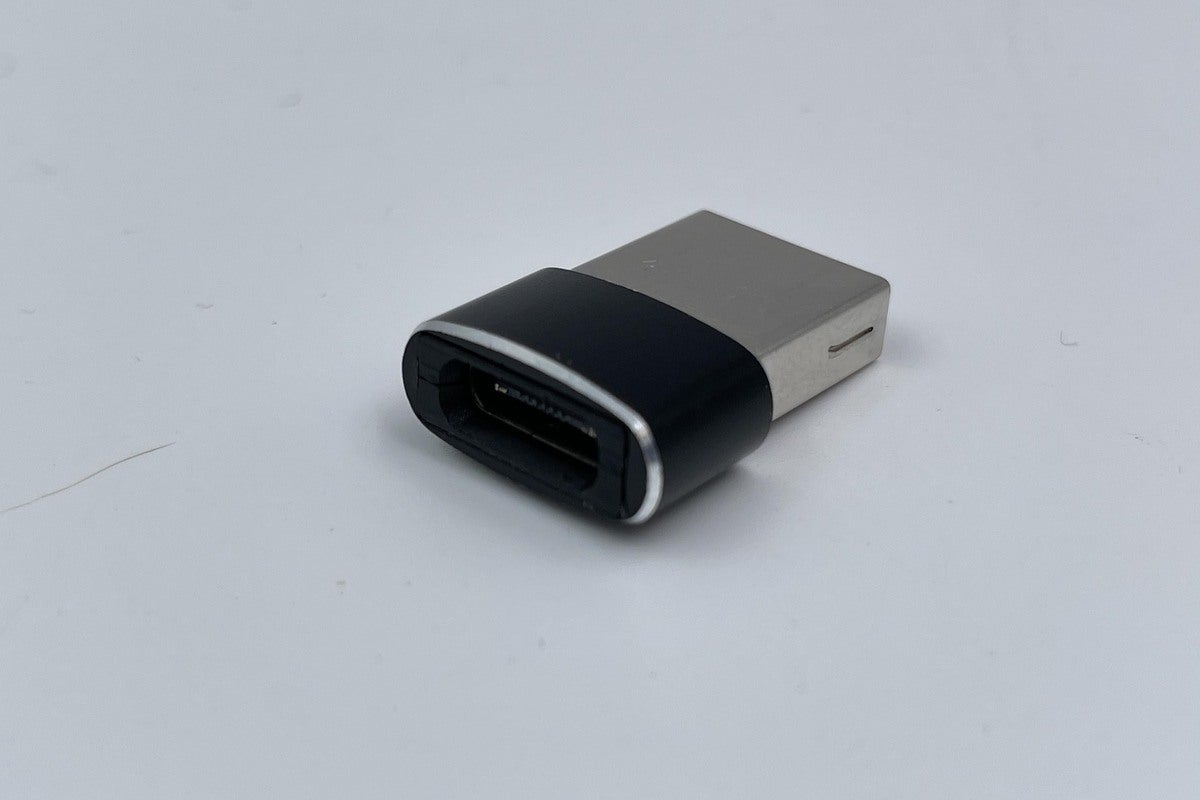 Theo Nicolakis / IDG
Theo Nicolakis / IDGDetail view of the Helm Audio Bolt’s USB adapter.
The second anomaly I experienced started when I connected the USB-C-to-USB-A adapter for use on my iPhone 12 Pro. Even though the Bolt’s power/idle light indicator would illumine blue, the Bolt DAC/AMP wouldn’t work on my iPhone 12—or any USB-A computer port for that matter. Audio would come only from my iPhone speakers and the Bolt would never show up as a speaker output option. Helm Audio sent me out a replacement USB-C-to-USB-A adapter and bingo! Everything worked flawlessly. In the unlikely event you run into a similar issue, the USB adapter is the likely problem.
THX Certified
The Bolt DAC/AMP is THX Certified, which is a big deal. THX certification is the gold-standard in the A/V world for quality and performance. The THX Certification process entails putting a product through more than 400 tests. The product must also meet precise manufacturing standards. And the product is re-tested again for compliance after production. Helm Audio says the Bolt DAC/AMP’s THX Certification is for ultra-low harmonic, crosstalk, and crossover distortion.
Helm Audio notes that its design is an intrinsic part of this low distortion. The Helm Bolt physically isolates the DAC from the USB connector. The Helm Bolt also uses a three-oscillator design to lock onto the frequency. The company claims these two design features dramatically improve the Bolt’s performance.
Automatic impedance and signal sensing
The Bolt DAC/AMP automatically detects your headphone’s impedance and sets the output level accordingly (1V for impedances less than 150 ohms, and 2V for impedances of 150 ohms or higher).
The Bolt DAC/AMP gives you a visual indicator of the current sample-rate playback. Blue indicates that the Bolt DAC/AMP has power (idle state) or a signal less than or equal to 48kHz. Red indicates a high-res signal greater than 48kHz. Magenta signifies MQA content regardless of the sampling rate. The LED indicator is very effective and my only constructive comment is that the Helm Audio team should consider changing the idle state color to another color (green perhaps), so that consumers can debug any potential anomalous situation. I also noted that when playing MQA content, the magenta LED seemed to be a blend of a separate blue and red light. Therefore, when viewed off angle, the light would seem dominantly blue or dominantly red.
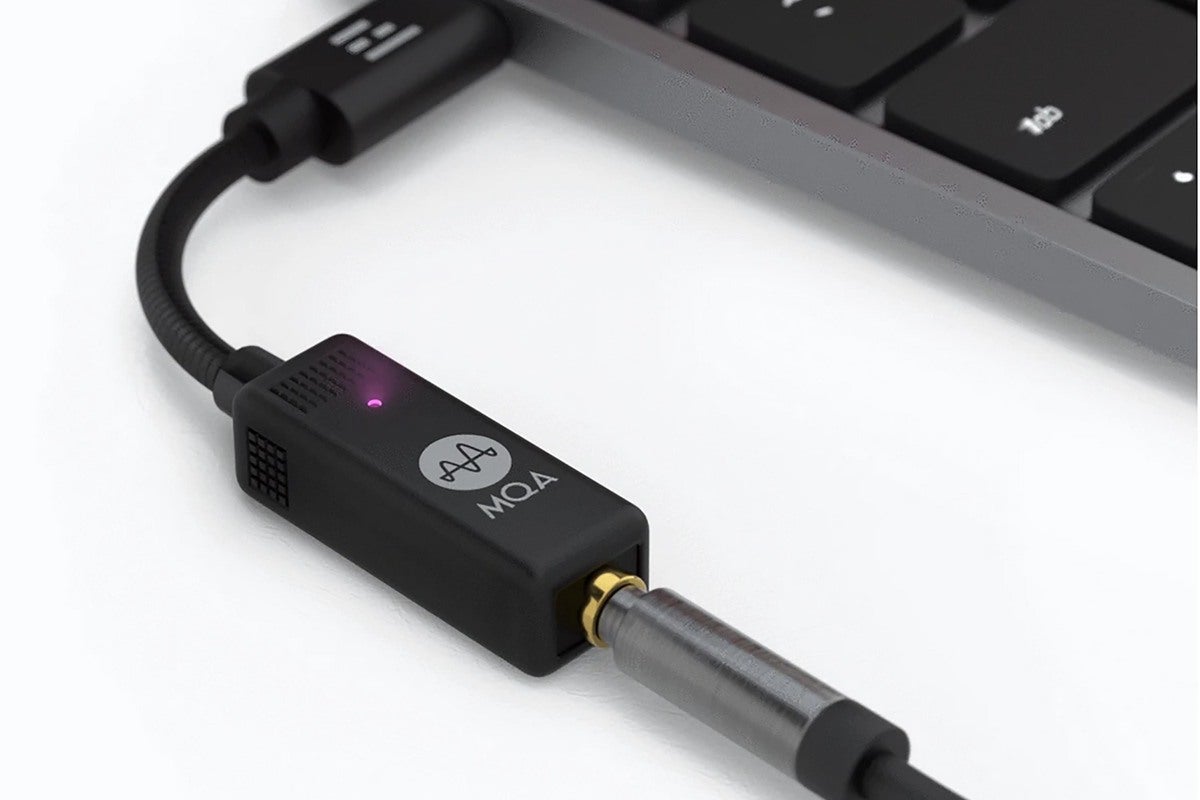 Theo Nicolakis / IDG
Theo Nicolakis / IDGThe Helm Bolt has an LED indicator to show you the signal format and sampling rate. Magenta indicates the presence of an MQA signal.
A revelatory listening experience
I tested the Helm Audio Bolt DAC/AMP on an iPhone 12 Pro, iPad Pro, and Macbook Pro. For testing on the iPhone 12 Pro, I used the previously mentioned Apple Lightning-to-USB adapters. Tidal served up all source material. I placed an emphasis on spinning up tracks classified as Tidal Masters, which are encoded with MQA.
I used a variety of headphones during my test period including the Oppo PM2 planar magnetic headphones, B&W PX, and Beyerdynamic Amiron Home; but my comments below will reflect my experience with the Focal Clear and B&W P9 Signature headphones.
The first and most natural question that came to my mind (and I assume yours) is how does the Helm Bolt compare to the built-in headphone output on a computer or the Lightning- to-headphone adapters Apple sells.
Well, it didn’t take long to finish that comparison.
Starting off, I pitted the Helm Bolt to Apple’s Lightning-to-headphone adapter. The Helm Bolt’s impact on the music was nothing short of astounding. Listening to the Helm Bolt’s musical presentation was like going into that hallowed back room in every high-end audio store. The musical soundstage snapped into an immediately discernible, three-dimensional layer. Instruments and vocals tightened up, standing in a firm space and time. Instruments in particular exhibited more refinement, texture, and air.
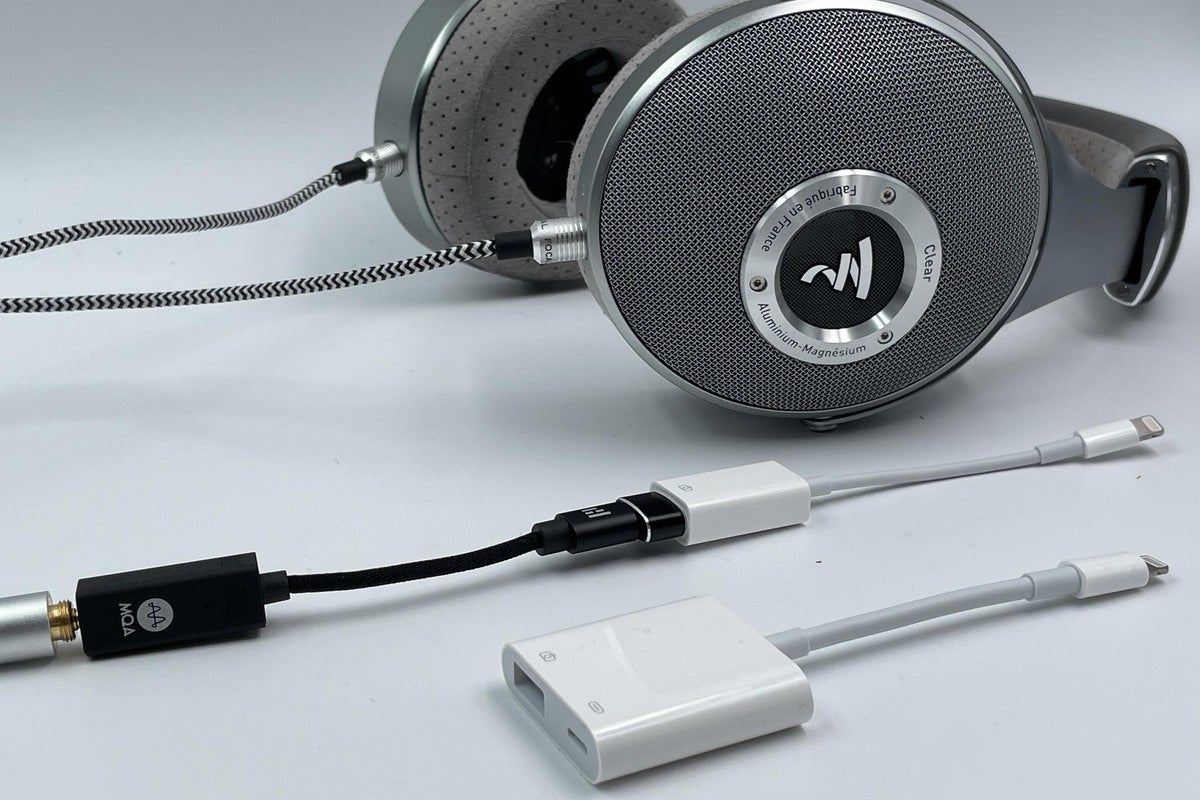 Theo Nicolakis / IDG
Theo Nicolakis / IDGTo use with an iPhone or iOS device with a Lightning connector, I used one of
Apple’s Lightning-to-USB adapters.
Listening on my iPhone 12 Pro through the Apple Lightning adapter was a downer by comparison. Music was flat, coming from a two dimensional sound stage. The all-important midrange was muddier. I regularly noted bass bloat. And the top end? It was dull. It lacked the delicacy, air, shimmer, and excitement that the Helm Bolt delivered.
Listening to the something as simple as the Tidal Master of Sting’s “Fragile (Live)” from the album My Songs laid bare the differences in the two adapters.
The Helm Bolt reveled in bringing “Rise” by Dominique Fils-Aimé to life. Percussive notes snapped with authority, weight, precision, and relentless attack. This is how real bass should be experienced. The same notes were comparatively dull, robbed of dynamics, and flat on the Apple headphone adapter. Listening to the same song through the two different adapters is a completely different emotional experience.
If you like bottom end authority, then you’ll love what how the Helm Bolt will render bass notes. Bass drums on the Aaron Copeland’s “Fanfare for the Common Man” by the Minnesota Orchestra conducted by Eiji Oue rumbled with gravitas and anvil-like authority. Yet all the while, bass notes were taut, articulate, and delicately textured. If you pair the Helm Bolt AMP/DAC with high-performance headphones, you’ll be able to see deep into the music and peel back nuanced instrument layers as you would through any high performance headphone DAC/AMP.
Listening to Lisa Gerrard’s “Elegy” from Immortal Memory was a case in point. Listening with the Focal Clear, the Apple adapter had a penchant for smearing Ms. Gerrard’s vocals. In fact, going back to the Apple adapter had a fatiguing effect on me in general. With “Elegy” in particular, the listening experience made me physically anxious. When I switched and listened to “Elegy” through the Helm Audio Bolt with the Focal Clear, my body physically reacted and relaxed. I was immediately drawn into the song’s haunting notes with Ms. Gerrard’s etherial vocals and idioglossic lyrics.
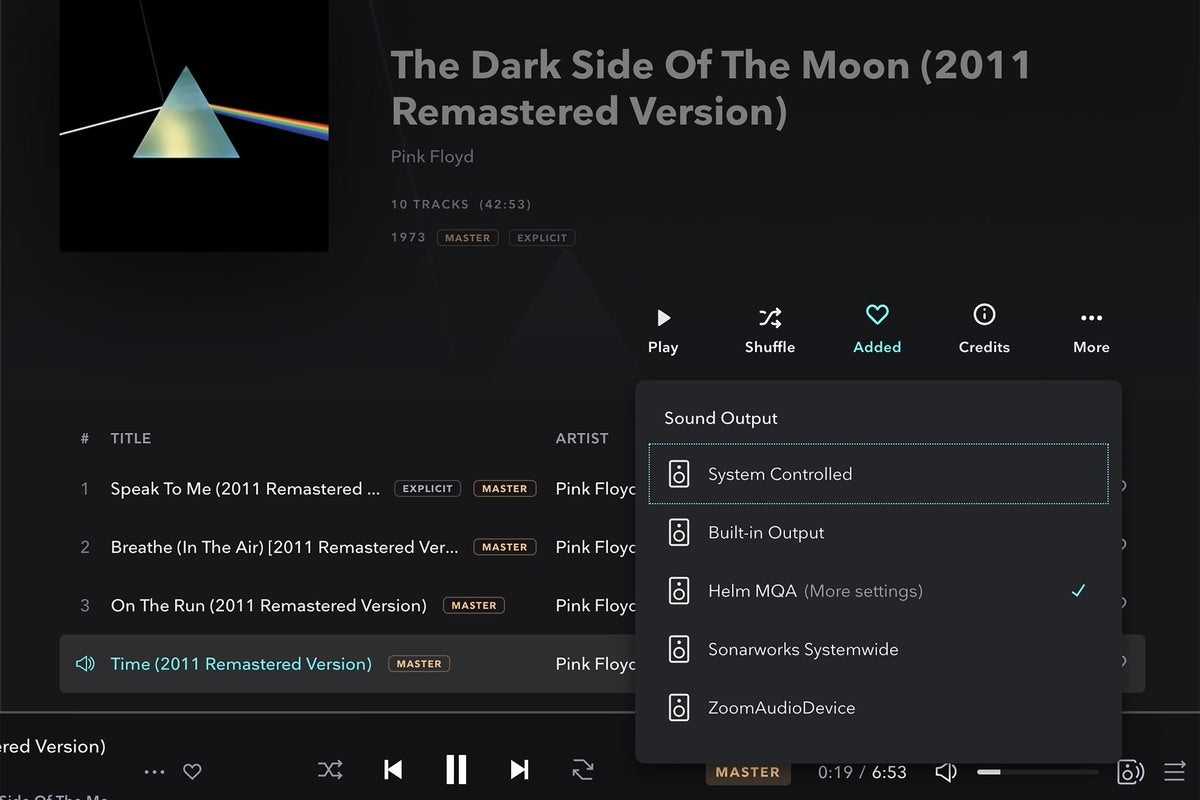 Theo Nicolakis / IDG
Theo Nicolakis / IDGUsing the Helm Bolt with the Tidal desktop application.
The experience was the same no matter the genre or artist: Classical, rock, jazz, you name it. The Helm Bolt liberated Linda Ronstadt’s crystalline vocals on “(I Love You) for Sentimental Reasons” from the album For Sentimental Reasons. The Bolt DAC/AMP rendered Ms. Ronstadt’s vocals with exceptional purity, detail, and air—lifelike. What Apple’s headphone adapter did by contrast was downright criminal. Piano notes lacked detail and air, and Ms. Ronstadt’s vocals were rendered flat—and dare I say uninvolving. Back and forth I went, shaking my head in disbelief each time at the difference. And when the sax lines on “Sentimental Reasons” kicked in through the Helm Bolt with an exceptionally smooth, clean, top end I was sold.
An audiophile no-brainer
Helm Audio’s Bolt DAC/AMP is one of those products whose price, performance, build quality, and form factor make it a veritable no-brainer. For a mere $99, the Bolt DAC/AMP noticeably improved the audio quality, dynamics, and emotional engagement of every song I tested with it on every device and with every headphone. Helm Audio’s Bolt is a hands-down winner and I expect will soon be an audiophile darling.
If you’re looking for a ultra-slim form factor DAC and amp that will decode every major high-res format—including MQA—in an ultra-compact form factor, then grab yourself a Bolt DAC/AMP. I know for my part, I plan on purchasing my review sample and giving it a permanent home in my portable audio collection. Highly recommended.
Note: When you purchase something after clicking links in our articles, we may earn a small commission. Read our affiliate link policy for more details.
The Helm Audio Bolt DAC/AMP’s outstanding audio performance; ability to decode every major high-res audio format—including MQA; ultra-compact form factor; and $99 price makes it a must-have device.
Pros
- Astounding audio performance that trounces similarly sized adapters
- 32-bit/384kHz DAC capable of MQA and DSD decoding
- USB-C-to-USB-A adapter included for iOS and legacy devices
- Plug-n-play with no drivers, external power supply, or charging required
Cons
- Apple Lighting-to-USB adapter required for Lightning-based iOS devices
Theo Nicolakis is a C-Level technologist and digital communications professional. He’s also a passionate audiophile and home theater aficionado.

